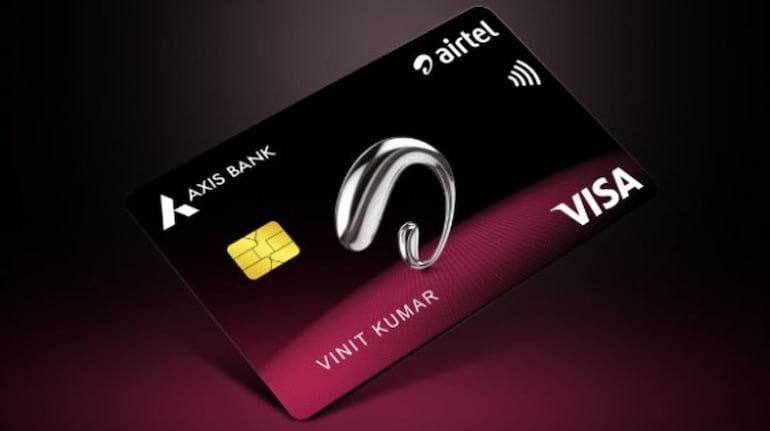
3-8 #Home : Nvidia has acquired Excelero; Samsung will not offer in-box chargers for upcoming M and A series; Türk Telekom has signed a MoU with Huawei; etc.

Taiwan Semiconductor Manufacturing Company (TSMC) has reported impressive yields for its next-generation chip manufacturing technology. Dubbed as the N3e, this technology is an upgrade over TSMC’s first iteration of the N3 node, which expects to shrink down some transistor dimensions to as low as 3nm. Initially, TSMC expected to initiate high volume manufacturing (HVM) using N3E about a year after N3 HVM start, sometimes in 3Q23. But since test production yields of N3E are already high, TSMC wants to start using it commercially earlier, sometimes in 2Q23. (Tom’s Hardware, CN Beta, WCCFTech, Twitter, Laoyaoba)

According to Yole Development, high-end performance packaging will be a USD7.87B market by 2027, with a 19% CAGR 2021-2027. UHD FO, HBM, 3DS, and active Si interposer combined are forecast to comprise more than 50% of the high-end performance packaging market by 2027. High-end performance packaging is creating waves of disruption in the semiconductor supply chain. Intel is the top investor, with USD3.5B. Its 3D chip stacking technology is Foveros, which consists of stacking a die on an active silicon interposer. The other leader, TSMC, is following through with USD3.05B of CapEx. While securing more business for UHD FO with its InFO solutions, TSMC is also defining new system-level roadmaps and technology for 3D SoC. Its CoWoS platform offers solutions such as RDL or silicon interposers, while its LSI platform is a direct competitor for EMIB. (Yole Development, Laoyaoba)
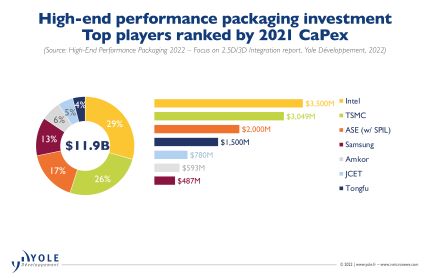
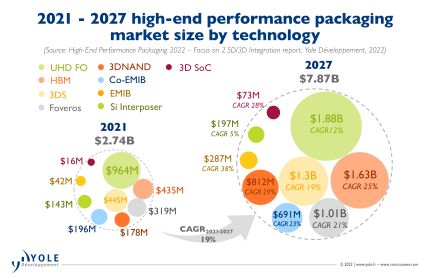
According to Yole Development, the global MCU market will reach USD26.4B in 2026. GPU s and AI accelerators may be gathering all the media attention with promises of more TOPS and FLOPS, but AI is not just scaling up, it is scaling down. The MCU market suffers as much from impacted OEM demand as automobile production struggles to get other high-performance components. (Laoyaoba, Yole Development)
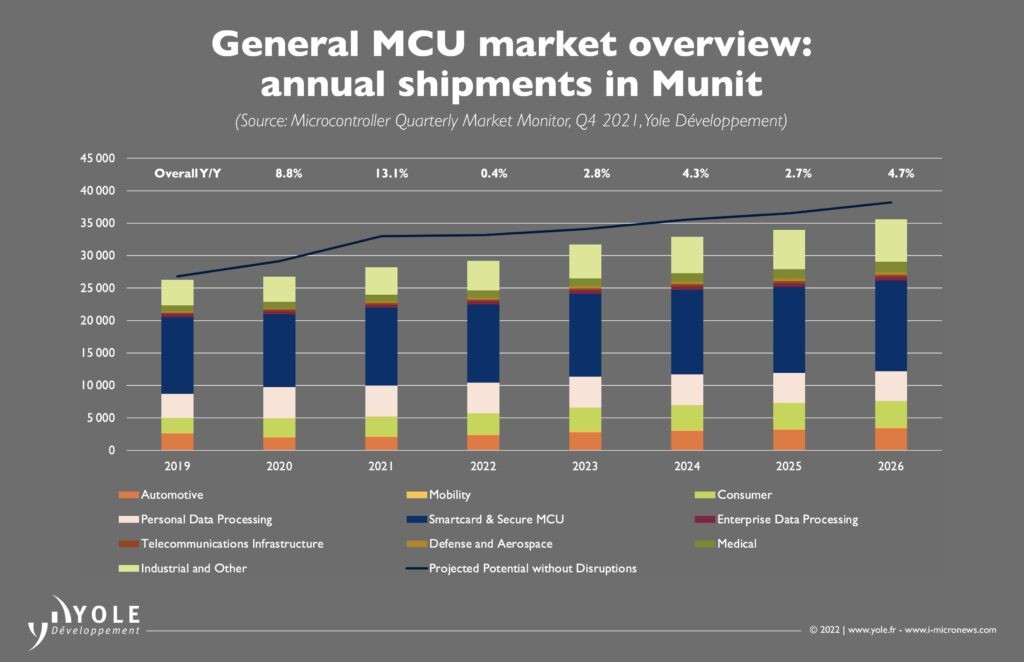
Apple is reportedly discussing the supply of flip chip-ball grid array (FC-BGA) substrates, which are to be used for its Apply Car, with a Korean company. FC-BGA substrates are a high value-added printed circuit board that connects semiconductor chips to the main substrate. They are one of the key components needed to build autonomous vehicles. The reason why Apple rushed to select a substrate manufacturer ahead of makers of other parts is a shortage of substrates. Currently, FC-BGA substrates are in a serious supply and demand imbalance due to manufacturers’ failure to forecast demand and explosive demand for information technology (IT) devices. Some predict a shortage in FC-BGA supply by 2026. Apple’s strategy is to secure key parts for self-driving cars in advance. Apple is expected to unveil the Apple Car as early as 2024.(CN Beta, Business Korea)
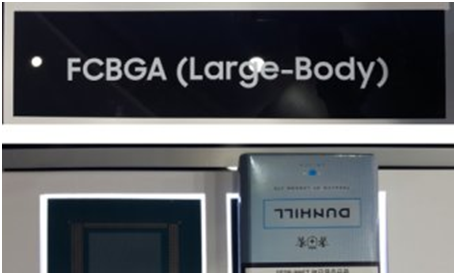
Nvidia has acquired the high-performing block storage provider, Excelero. Founded in 2014, NVIDIA will integrate Excelero’s technology into the company’s business software stack. Excelero NVMesh, the company’s core product, delivers software-defined block storage through networked NVMe SSD storage. NVMesh functions via networked drives on-premises or in private clouds. Last year, Excelero introduced support for Microsoft Azure. Excelero has amassed USD35M in venture capital over the previous several years, and in 2018 received an investment by Western Digital.(CN Beta, Nvidia, CRN, Times of Israel, WCCFTech)
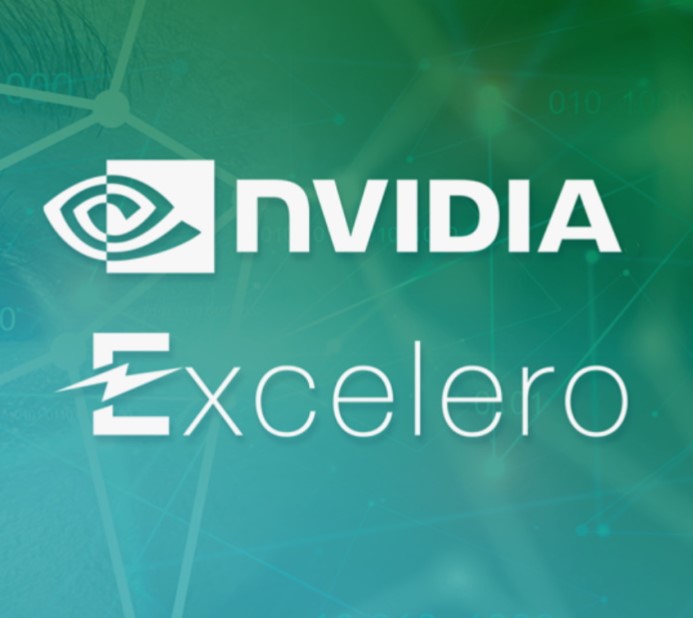

Samsung’s patent shows a foldable phone with a sideways folding display. The folding display is situated on the top half of the phone, curving around the back and sitting next to the rear cameras when not in use. Unfold the display from the left and you’ve got an extended screen for the front, although this extension again only applies to the top half. The patented foldable phone features a hinge on the lower left-hand side, as well as three magnets to keep the display stuck to the back cover when folded. The patent also notes that the screen has ultra-thin glass for protection.(Android Authority, LetsGoDigital)
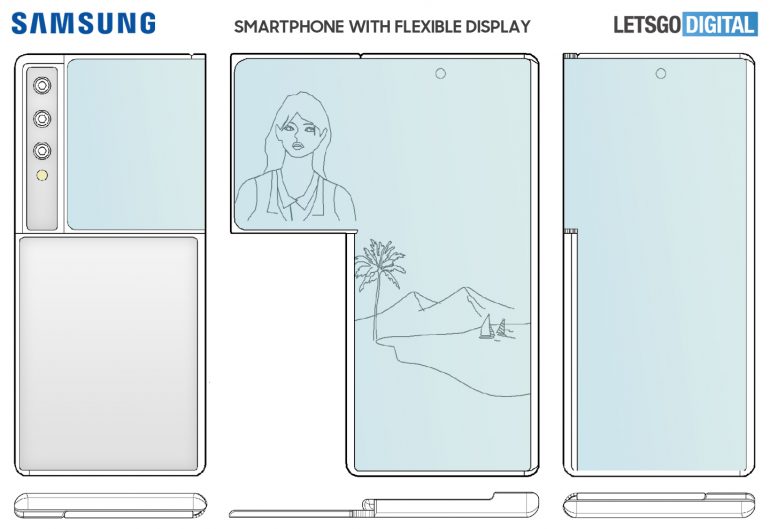
Xiaomi’s design patent titled “smart bracelet” describes a fitness band that includes a rollable flexible display in the build of the device. The patent highlights that the unique design of smart band focuses on the shape and ergonomics of the fitness band. The patent includes views of the design of the fitness band from multiple angles.(CN Beta, IT Home)
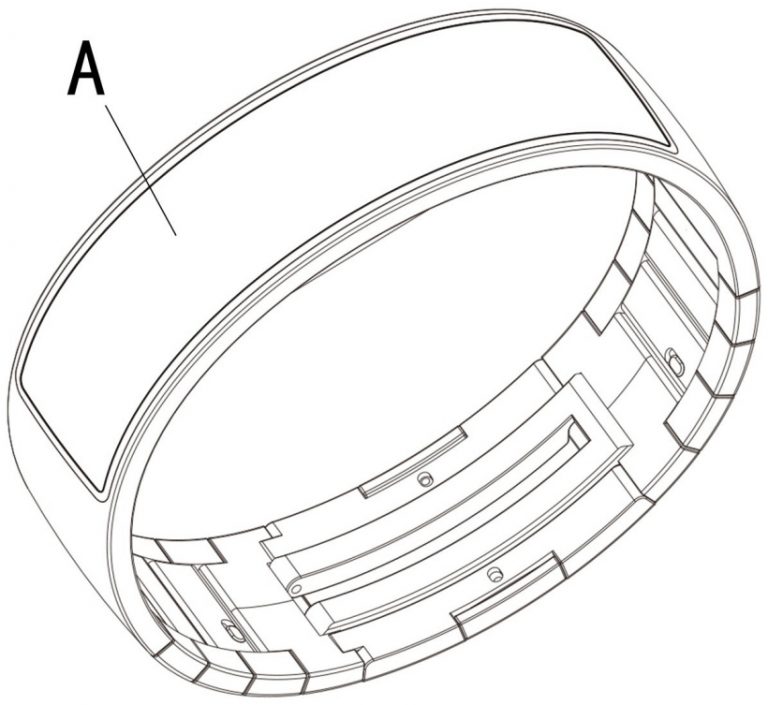
Samsung Electronics has filed a trademark application for Fashion Film with the UK Intellectual Property Office (UKIPO). Classified as Class 9, the application reads: Smartphones are often fitted with a protective film (or screen protector) to protect the glass surface from scratches and impacts. Such a protective film can be attached to the front and back of the phone.(CN Beta, Realmi Central, LetsGoDigital)
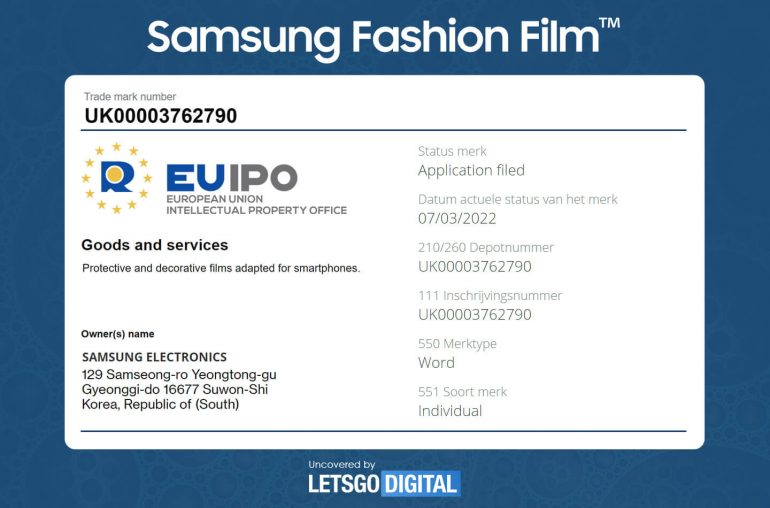

Google’s patent titled “Skin interface for Wearables: Sensor fusion to improve signal quality” details technology that users can use to operate wearable devices using skin gestures. The patent describes that user can swipe or tap the skin near the wearables to control them. The gesture creates a mechanical wave that is picked up by the sensors in the wearables. The “Sensor Fusion” technology then combines this movement data collected from various sensors into an input command for the wearable.(Android Authority, LetsGoDigtal)
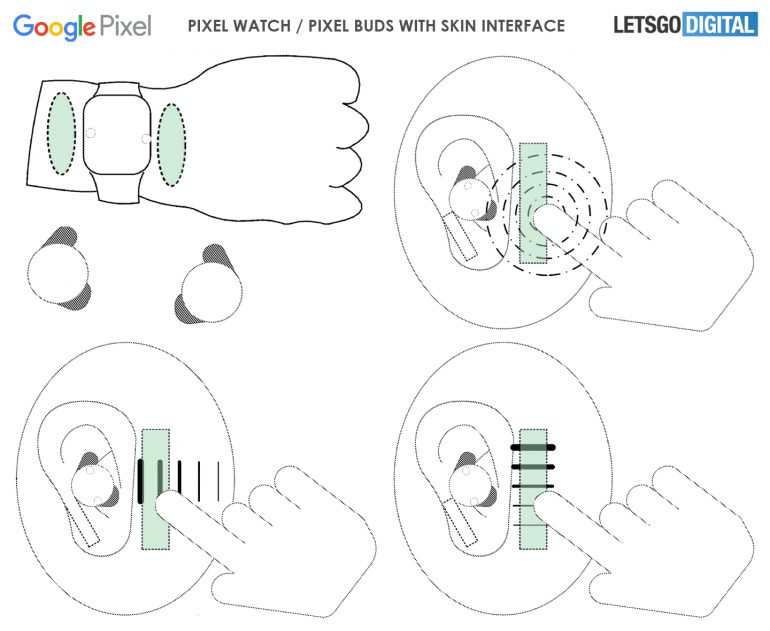

Samsung reportedly will not offer in-box chargers for upcoming Galaxy M and Galaxy A series smartphones. Furthermore, the upcoming Galaxy F23 will lack a charger too. (Android Authority, Twitter)
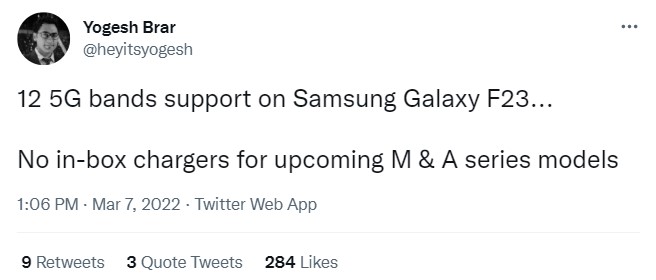

According to GSMA, by the end of 2021, 5.3B people subscribed to mobile services, representing 67% of the global population. In a growing number of markets, most adults now own a mobile phone, meaning that future growth will come from younger populations taking out a mobile subscription for the first time. Over the period to 2025, there will be an additional 400M new mobile subscribers, most of them from Asia Pacific and Sub-Saharan Africa, taking the total number of subscribers to 5.7B (70% of the global population). In 2021, mobile technologies and services generated USD4.5T of economic value added, or 5% of GDP, globally. This figure will grow by more than USD400B by 2025 to nearly USD5T as countries increasingly benefit from the improvements in productivity and efficiency brought about by the increased take-up of mobile services. (GSMA, report, CN Beta)
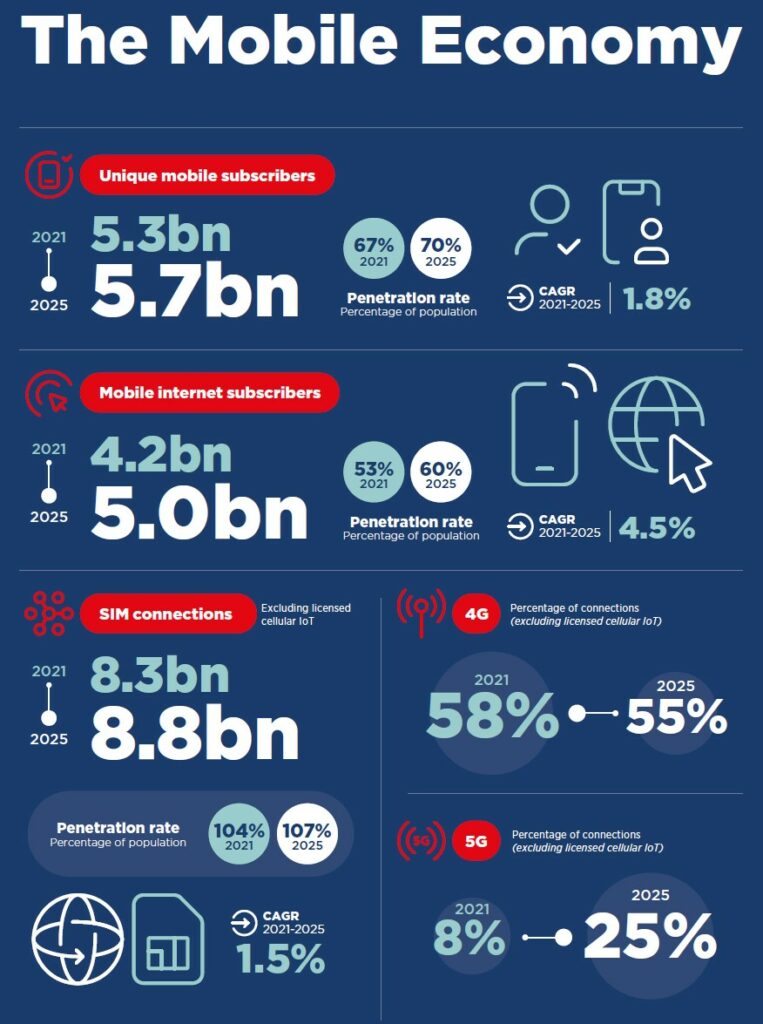
Türk Telekom has signed a Memorandum of Understanding (MoU) with Huawei to forget ahead in the development of technologies related to 5G networks in Turkey. Türk Telekom has a vast consumer base in Turkey, counting over 14.1M broadband connections by the end of Sept 2021. Telecom has seen fiber connection subscribers rising 67% to 8.8M in the first 9 months of 2021. On the other hand, Türk Telekom has seen that the mobile consumer base has grown to 23.9M.(GizChina, Hurriyet Daily News, Huawei, Huawei Central)
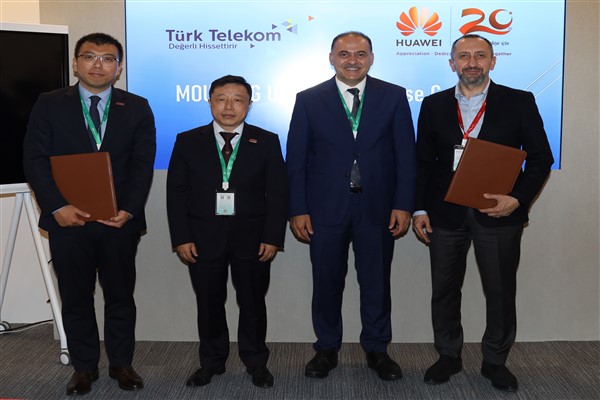

TF Securities analyst Ming-chi Kuo has said that Apple iPhone SE 2022 will enter mass production in Mar 2022, and Apple is estimated to ship 25-30M units of the smartphone in 2022. He also writes that the iPhone SE 3 will be available in three storage configurations: 64GB, 128GB, and 256GB. (GSM Arena, Twitter, 9to5Mac, Apple Insider)
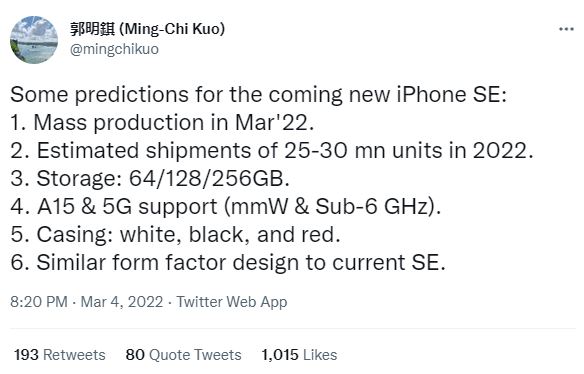
Adam Ferguson, HMD Global’s Head of Global Product Marketing, has revealed that making an USD800 phone does not make sense for them at the moment. He has further added that HMD does not “want to get involved in a massive spec war with other players” and would rather “stand for something very different”.(GSM Arena, Android Authority)
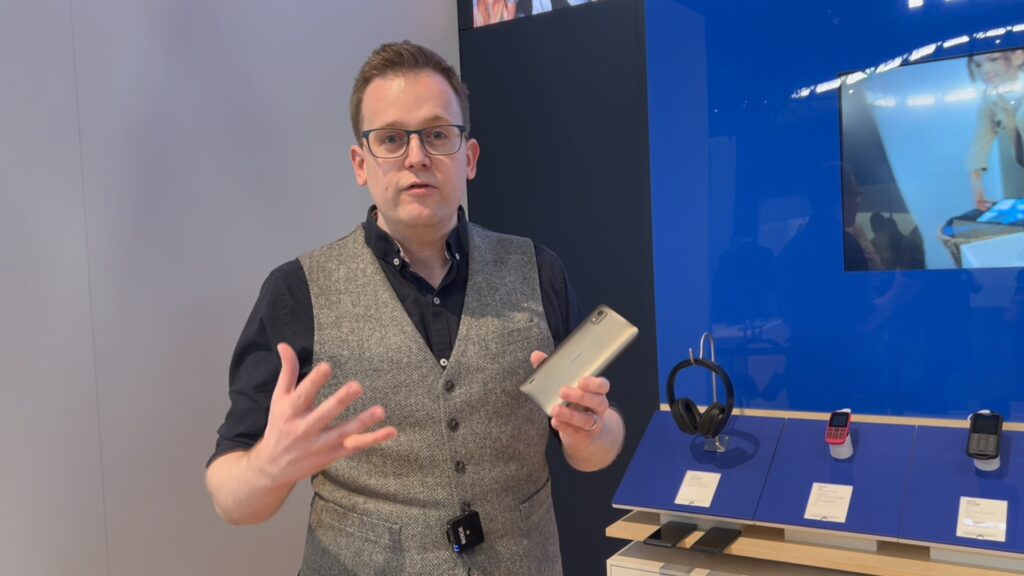
Apple will likely announce a new low-cost version of its iPhone SE with 5G capabilities. CFRA Research analyst Angelo Zino said Apple could attract more price-sensitive consumers if the price remains the same for the new version. The United States, Japan and Western Europe have been the top markets for iPhone SE sales in recent years, said analyst Ryan Reith of IDC. Reith said these regions will likely remain the top markets after the anticipated launch of the third-generation iPhone SE.(CN Beta, Irish Times, 9to5Mac, Reuters)
Samsung Galaxy F23 5G is launched in India – 6.6” 1080×2408 FHD+ v-notch 120Hz, Qualcomm Snapdragon 750G, rear tri 50MP-8MP ultrawide-2MP macro + front 8MP, 4+128 / 6+128GB, Android 12.0, side fingerprint, 5000mAh 25W, INR15,999 (USD210) / INR16,999 (USD220).(Android Authority, GSM Arena, Flipkart, Samsung)
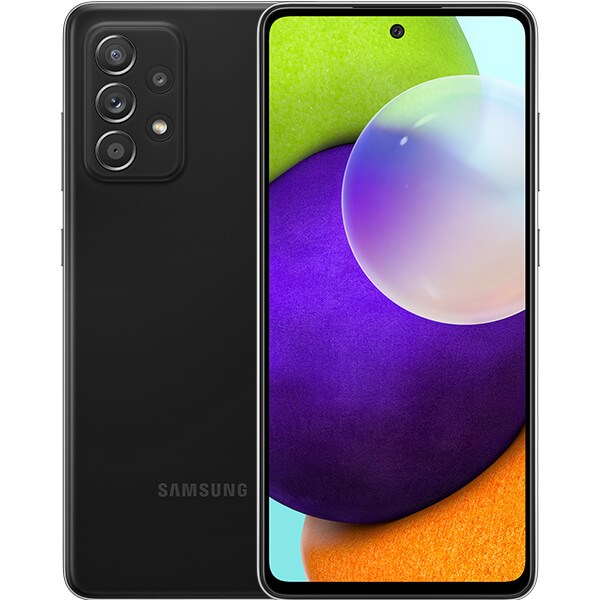

Microsoft has unveiled its fourth data center in India, betting on rising digital consumption in one of its fastest-growing markets. Microsoft India head Anant Maheshwari has said the company was making long-term investments in the country. He has indicated that the company’s business model, which relies on partners building additional services on top of its cloud platform, Azure, generated business worth about USD10B in the last 5 years.(CN Beta, Reuters, Live Mint, Nasdaq)
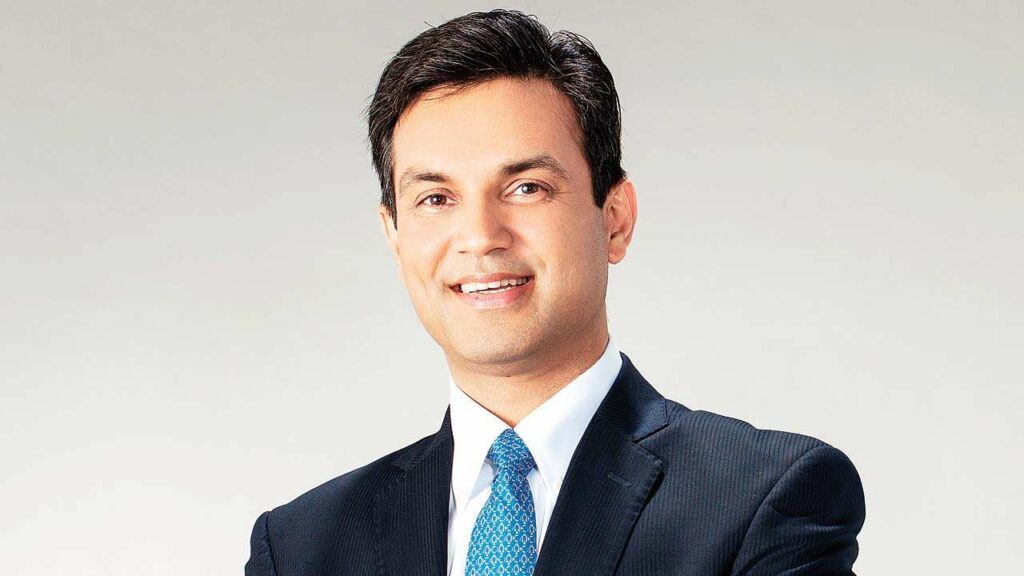
Google is interested in acquiring Mandiant to boost its cloud security in an effort to better compete against Microsoft Azure. Mandiant, which has a market cap around USD5.25B, was previously under the FireEye umbrella before that brand was sold. FireEye was credited with helping Microsoft discover the SolarWinds hack that attacked government systems in 2021. (CN Beta, CNBC, Reuters, The Information)

Google is introducing Android 12L focusing on normal users. Android 12L’s optimizations for bigger screens include dedicated columns for notifications and quick tiles – the former on the right, the latter on the left. Settings has a two-column view on such devices with bigger screens, although some variation of this has already been implemented by a lot of Android device makers. Android 12L’s new taskbar allows for quicker multitasking. Google claims that the company will bring Android 12L to tablets and foldables from Samsung, Lenovo and Microsoft starting later in 2022. (Android Police, GSM Arena, XDA-Developers, Google, CN Beta)
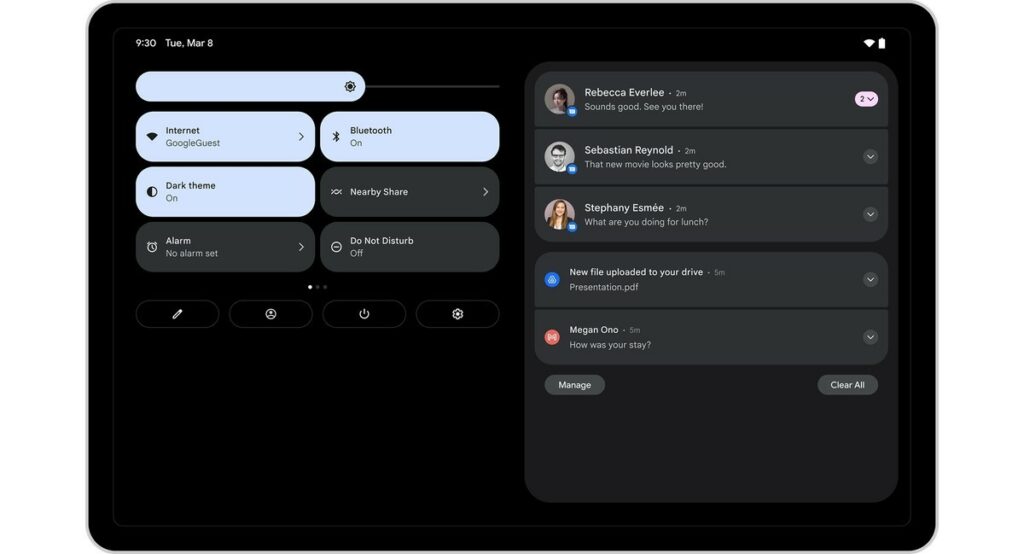

General Atomics Aeronautical Systems Inc (GA-ASI) has unveiled its latest jet-powered robotic drone, the Gambit, which is designed to use artificial intelligence (AI) and autonomous systems to fly alongside human-piloted aircraft and achieve air dominance. Gambit is an Autonomous Collaborative Platform (ACP), a flying team-mate that will work with piloted aircraft, penetrating into combat zones to detect, identify, and target adversaries at range and scale before they can become a threat to its human partner. (CN Beta, New Atlas, GA-ASI)


Argent is officially launching its Layer 2 solution. The company is choosing zkSync as its Layer 2 scaling implementation. It is supposed to offer cheaper and faster transactions without any compromise on security. Argent is an Ethereum smart wallet for both iOS and Android that has been around for a few years. It is a non-custodial wallet. Zero-knowledge rollup implementations like zkSync are particularly cost effective as a validity proof is generated based on hundreds of transactions. This validity proof is then posted to the main Ethereum blockchain, and Layer 2 transactions cannot be altered because they will not comply with the validity proof.(TechCrunch, Argent, The Block Crypto)
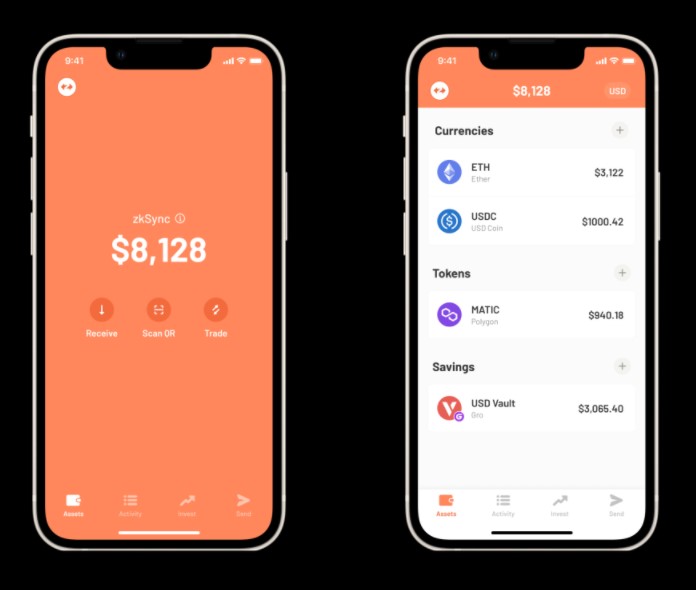
Bharti Airtel and Axis Bank have announced a collaboration for offering financial services, starting with a co-branded credit card for subscribers of the telecom services company. Under the partnership, the companies will provide pre-approved instant loans, “buy now pay later” offerings, and other services. The collaboration will provide Axis Bank support to penetrate deeper into tier 2 and 3 markets.(CN Beta, Money Control, Live Mint, India Times)
